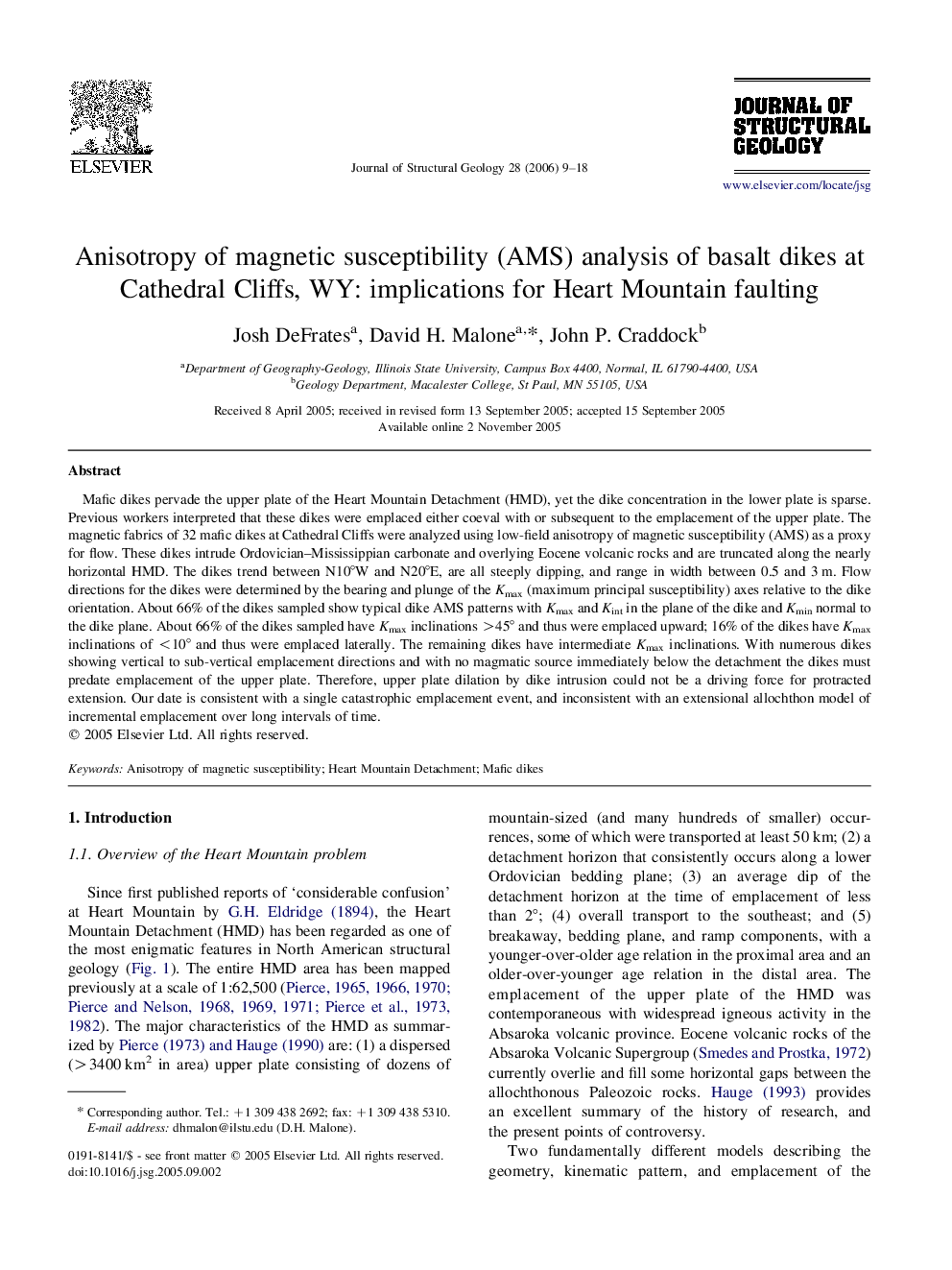| Article ID | Journal | Published Year | Pages | File Type |
|---|---|---|---|---|
| 4734075 | Journal of Structural Geology | 2006 | 10 Pages |
Mafic dikes pervade the upper plate of the Heart Mountain Detachment (HMD), yet the dike concentration in the lower plate is sparse. Previous workers interpreted that these dikes were emplaced either coeval with or subsequent to the emplacement of the upper plate. The magnetic fabrics of 32 mafic dikes at Cathedral Cliffs were analyzed using low-field anisotropy of magnetic susceptibility (AMS) as a proxy for flow. These dikes intrude Ordovician–Mississippian carbonate and overlying Eocene volcanic rocks and are truncated along the nearly horizontal HMD. The dikes trend between N10°W and N20°E, are all steeply dipping, and range in width between 0.5 and 3 m. Flow directions for the dikes were determined by the bearing and plunge of the Kmax (maximum principal susceptibility) axes relative to the dike orientation. About 66% of the dikes sampled show typical dike AMS patterns with Kmax and Kint in the plane of the dike and Kmin normal to the dike plane. About 66% of the dikes sampled have Kmax inclinations >45° and thus were emplaced upward; 16% of the dikes have Kmax inclinations of <10° and thus were emplaced laterally. The remaining dikes have intermediate Kmax inclinations. With numerous dikes showing vertical to sub-vertical emplacement directions and with no magmatic source immediately below the detachment the dikes must predate emplacement of the upper plate. Therefore, upper plate dilation by dike intrusion could not be a driving force for protracted extension. Our date is consistent with a single catastrophic emplacement event, and inconsistent with an extensional allochthon model of incremental emplacement over long intervals of time.
